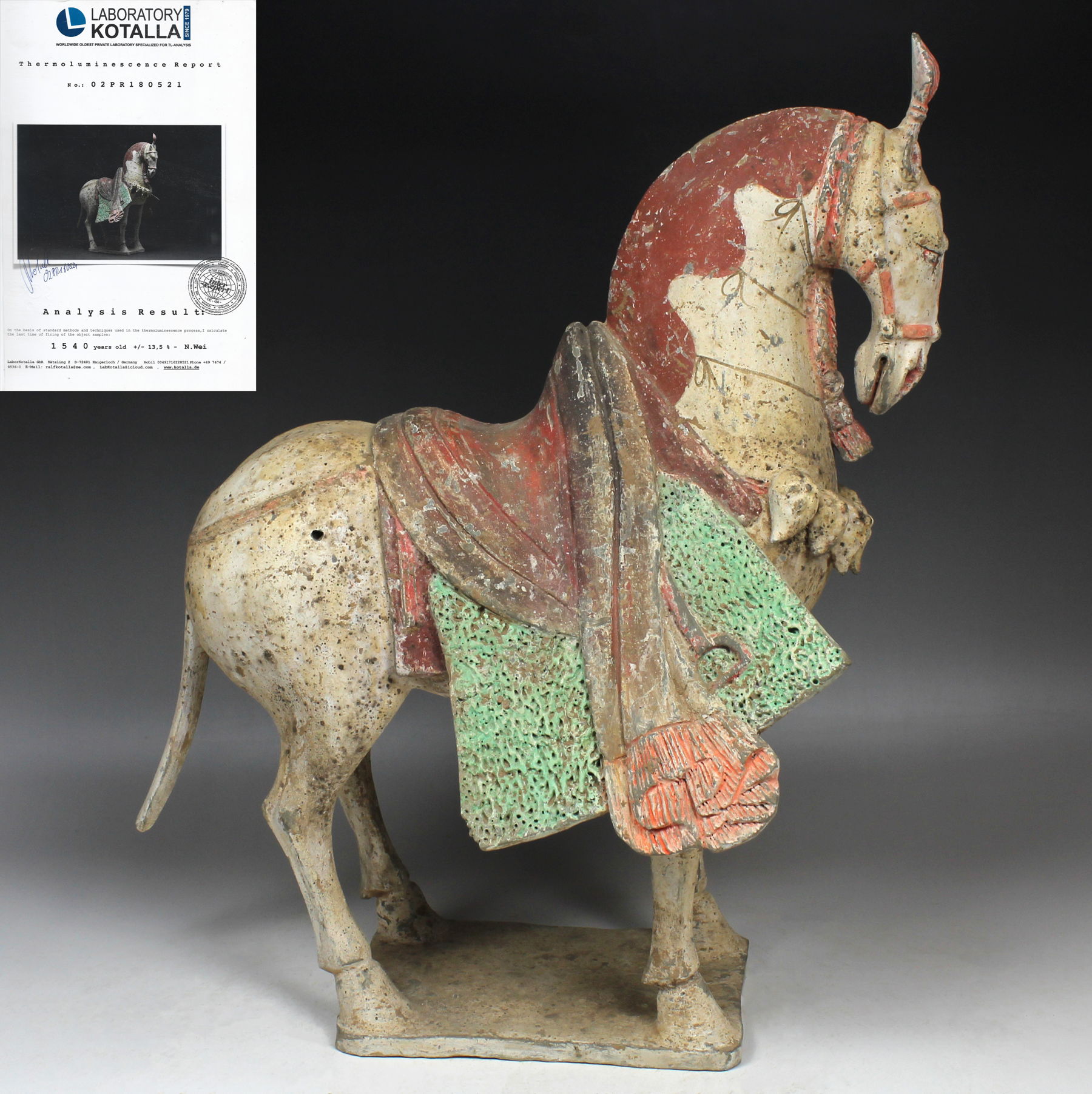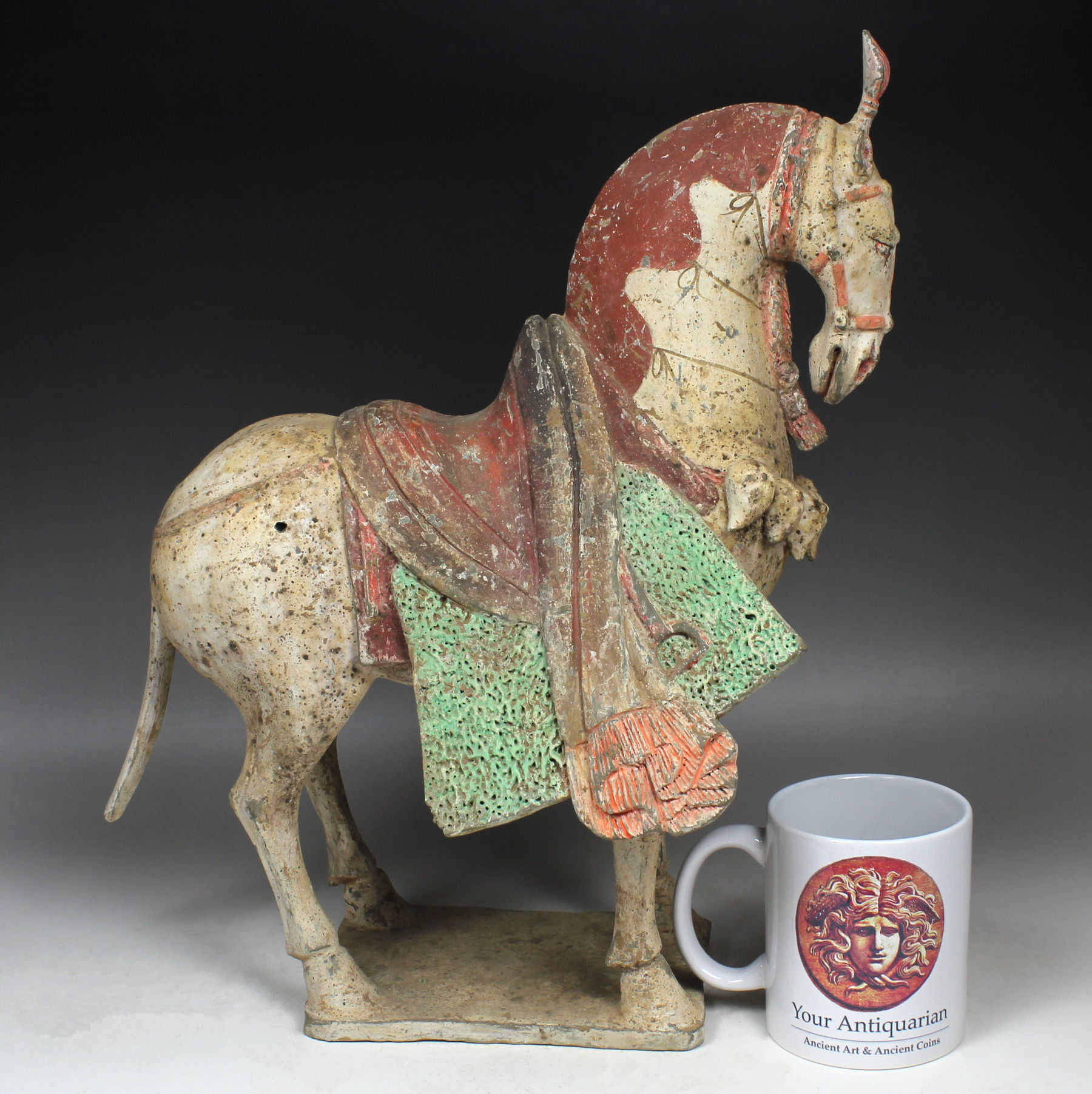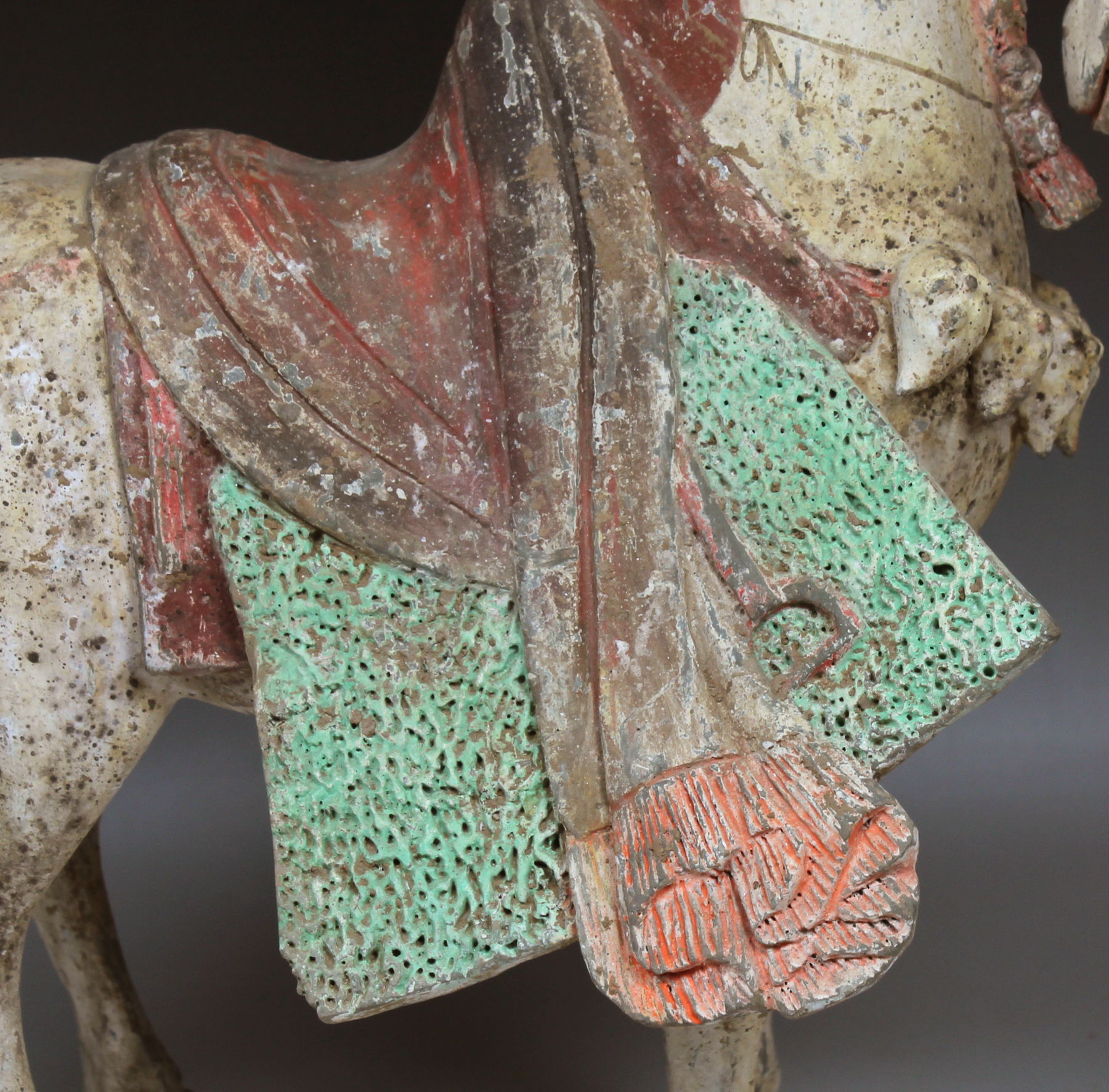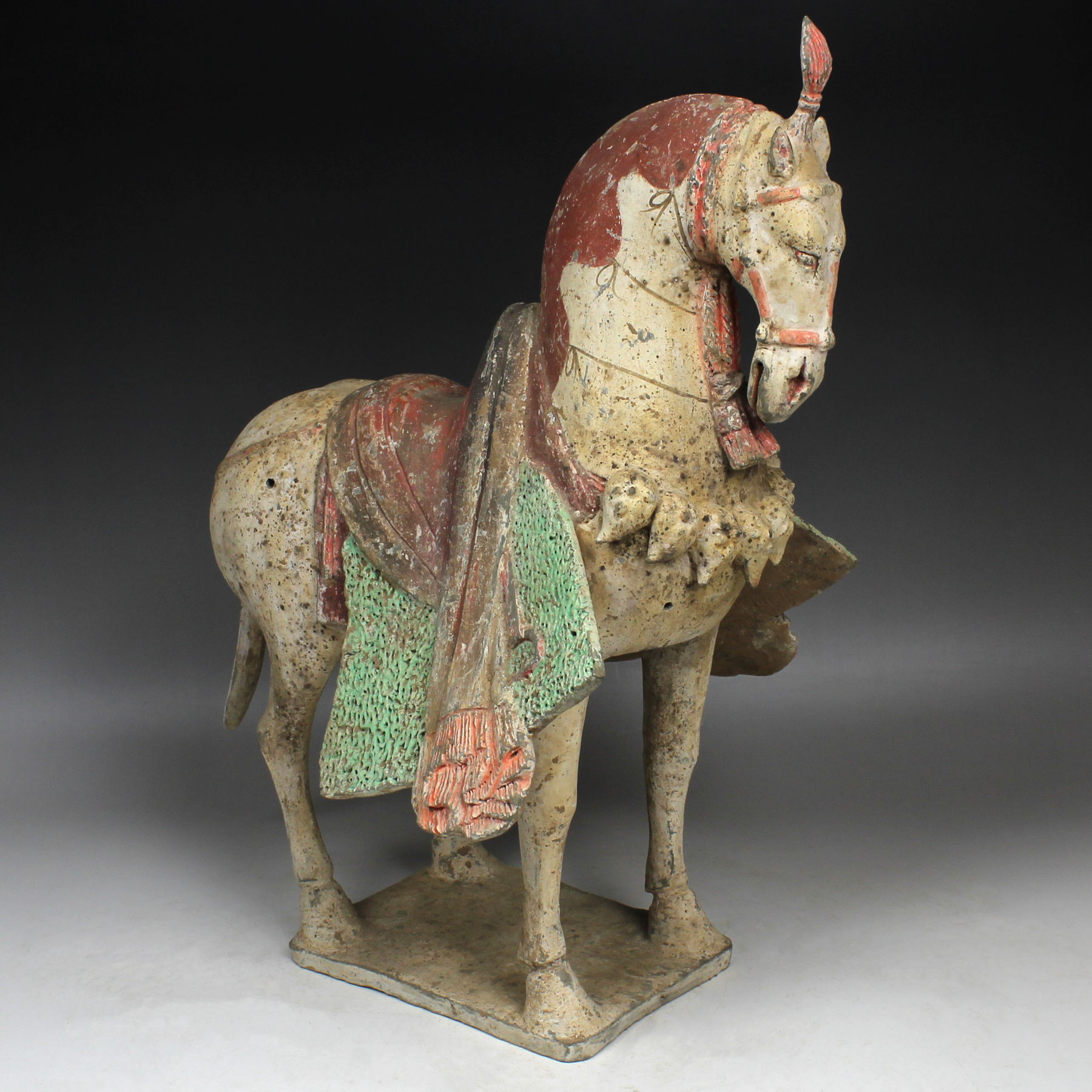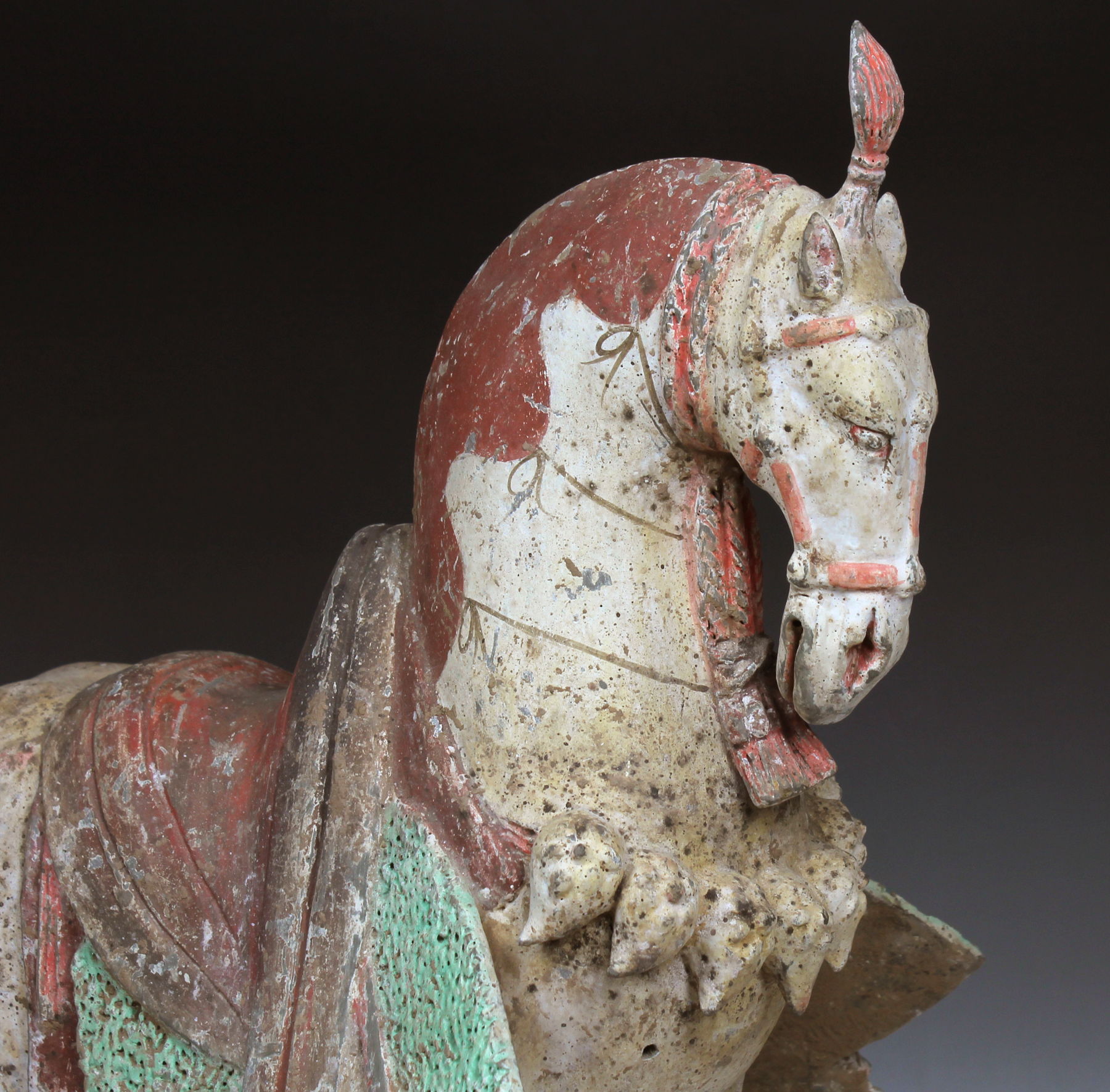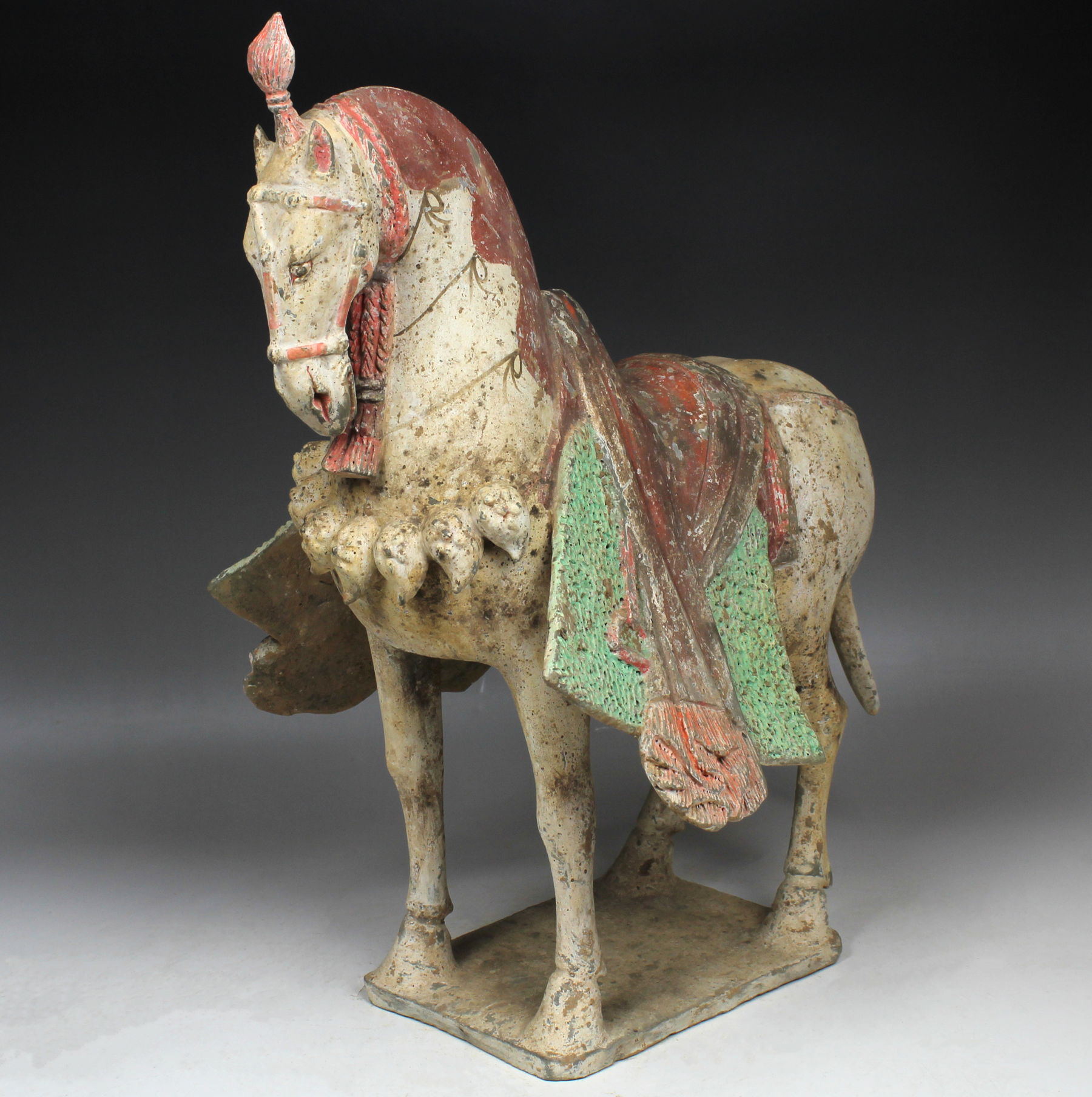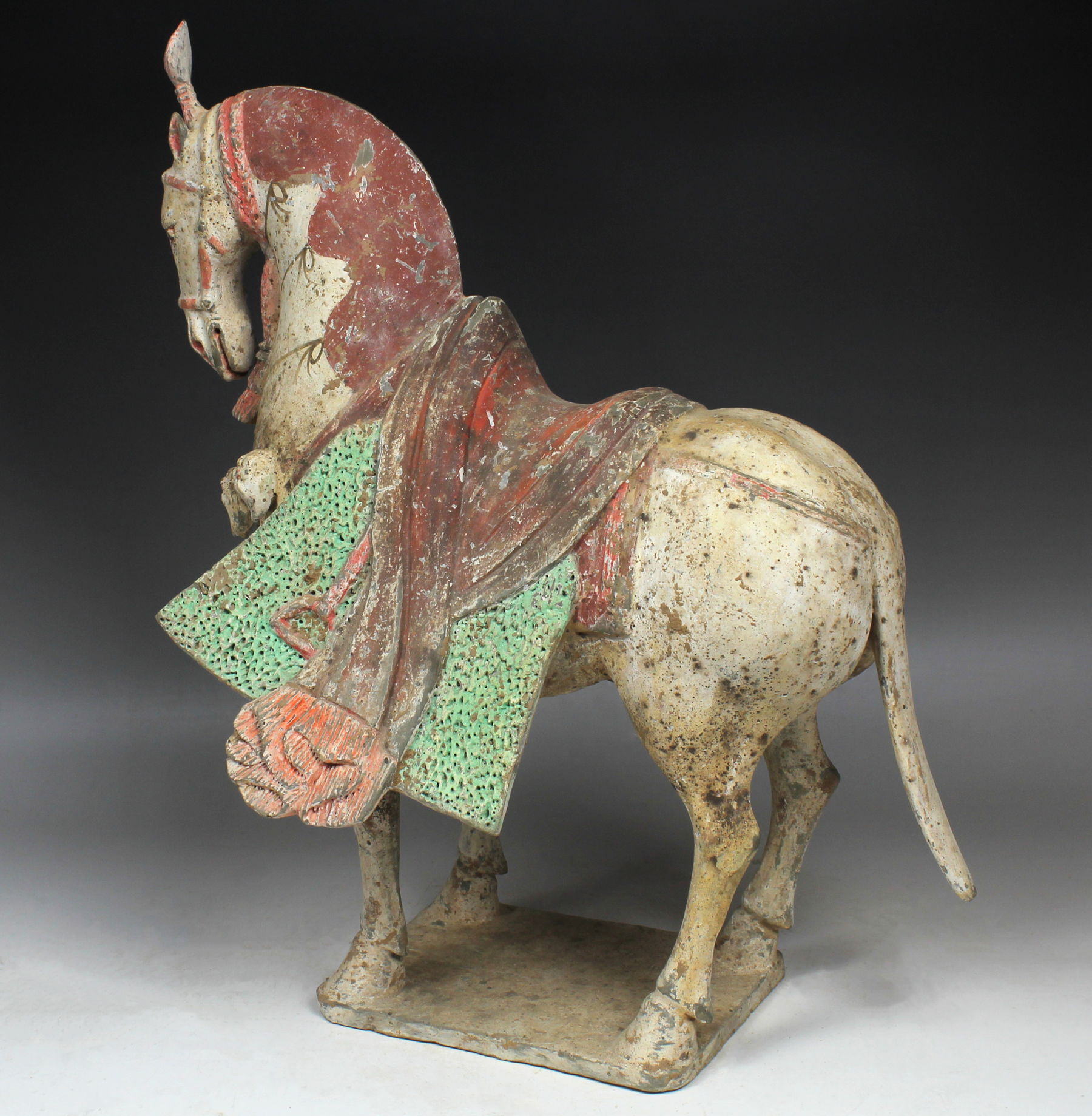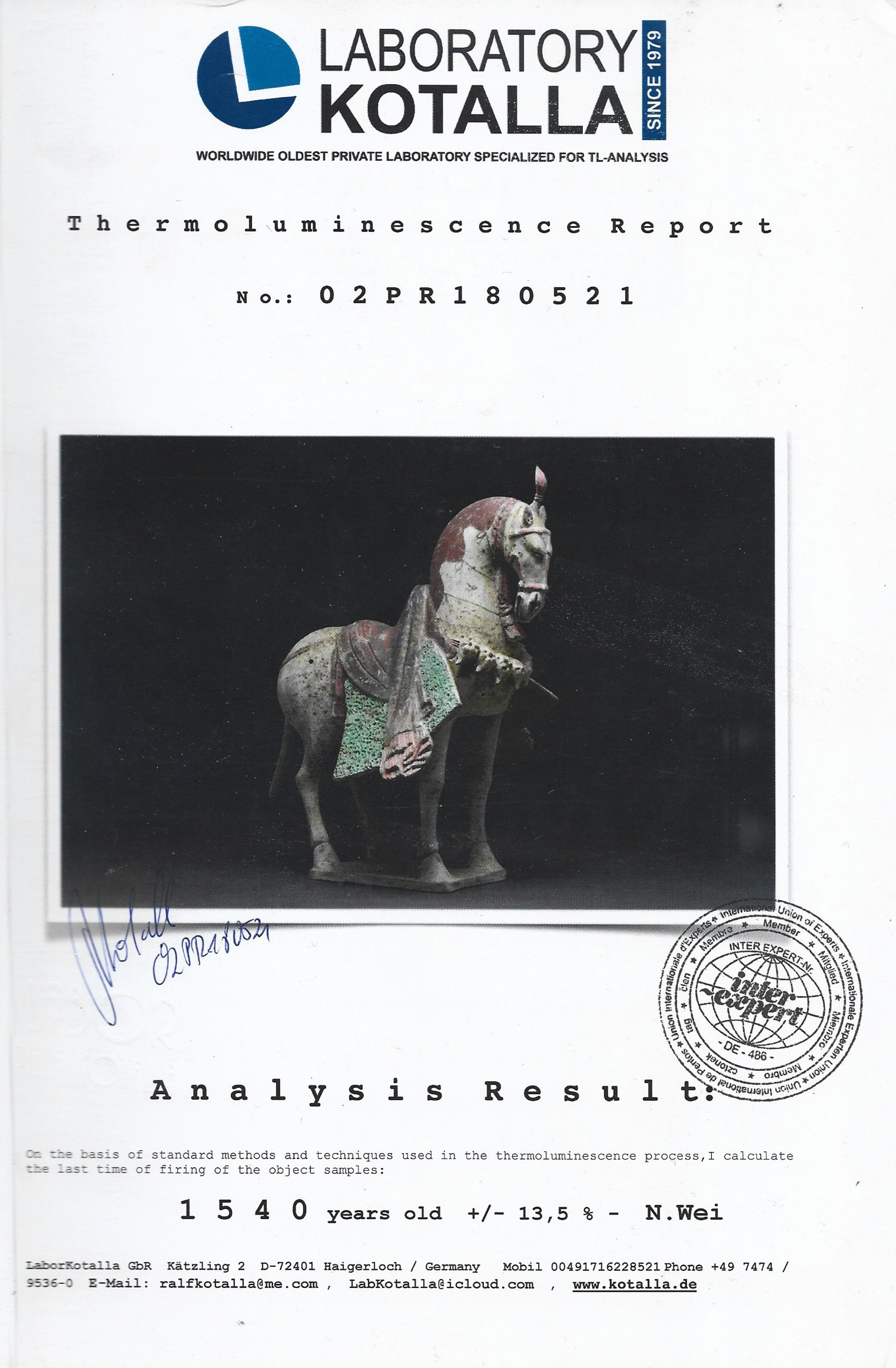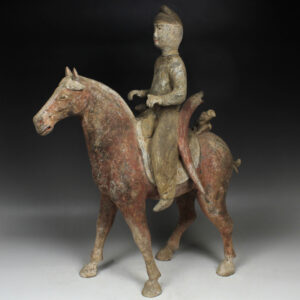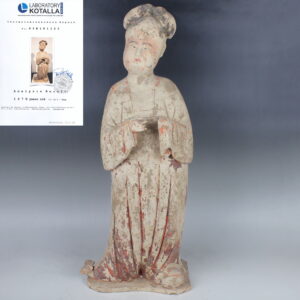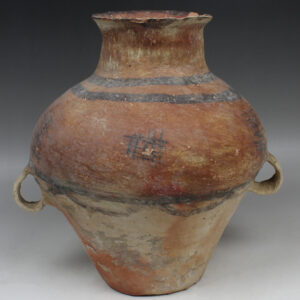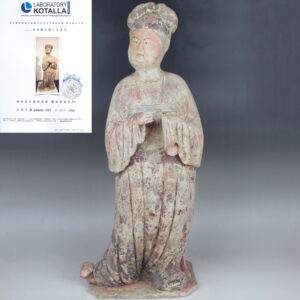Description
| ITEM | Statuette of a horse |
| MATERIAL | Pottery |
| CULTURE | Chinese, Northern Wei Dynasty |
| PERIOD | 386 – 535 A.D |
| DIMENSIONS | 404 mm x 350 mm x 230 mm |
| CONDITION | Good condition. Includes Thermoluminescence test by Laboratory Kotalla (Reference 02PR180521) |
| PROVENANCE | Ex Belgian private collection (2022), Ex English art gallery, Ex English private collection, Ex Hong Kong art collector, acquired in the early 1990s |
The Northern Wei Dynasty, which reigned from 386 to 534 AD, was a pivotal period in Chinese history characterized by a fusion of nomadic and Han Chinese cultural influences. Founded by the Tuoba clan of the Xianbei people, the dynasty was marked by significant territorial expansion and cultural achievements. The Northern Wei Dynasty played a crucial role in the Sinicization of northern China, adopting many aspects of Han Chinese culture while retaining elements of their own nomadic heritage. This period saw advancements in art, literature, and Buddhism, with the latter becoming the state religion during the reign of Emperor Xiaowen, who initiated policies to sinicize the dynasty further.
One of the remarkable cultural artifacts from the Northern Wei Dynasty is the Horse Minqi statuettes. These miniature horse sculptures, typically crafted from ceramic, are renowned for their exquisite detail and craftsmanship. The Horse Minqi statuettes are believed to have served various purposes, including burial goods, offerings, and decorative items. They often depict horses in dynamic poses, capturing the vitality and grace of these animals. Some sculptures also feature riders, reflecting the importance of horsemanship and cavalry in Northern Wei society.
The Horse Minqi statuettes not only showcase the artistic achievements of the Northern Wei Dynasty but also provide valuable insights into the cultural and military practices of the time. Horses held great significance in nomadic cultures, symbolizing power, mobility, and prestige. As such, the production of these statuettes highlights the importance of horses in Northern Wei society, both in practical terms, such as transportation and warfare, and in symbolic and cultural contexts.
北魏是公元386年至534年间统治中国的一个重要时期,其特点是融合了游牧和汉族文化的影响。由鲜卑族拓跋氏建立,北魏朝廷以颇具影响力的领土扩张和文化成就而著称。北魏时期对中国北方的汉化进程起到了至关重要的作用,他们吸收了许多汉族文化的元素,同时保留了自己游牧民族的传统。在北魏朝,艺术、文学和佛教都有所发展,佛教在孝文帝时成为国教,他还推行了一系列的汉化政策。
北魏时期的马闽器雕塑是一系列引人注目的文物之一。这些小型马雕塑通常由陶瓷制成,以其精湛的细节和工艺而闻名。马闽器雕塑据信用于各种用途,包括作为葬礼品、祭品和装饰品。它们经常描绘马匹的动态姿态,捕捉到了这些动物的生机与优雅。一些雕塑还描绘了骑手,反映了北魏社会中骑术和骑兵的重要性。
马闽器雕塑不仅展示了北魏时期的艺术成就,还为我们提供了宝贵的文化和军事实践见解。在游牧文化中,马具有重要的象征意义,代表着权力、机动性和声望。因此,这些雕塑的制作突显了马在北魏社会中的重要性,无论是在实际方面,如交通和战争,还是在象征和文化背景下。如今,这些精美的文物成为了研究北魏时期艺术、历史和文化的宝贵资料。


